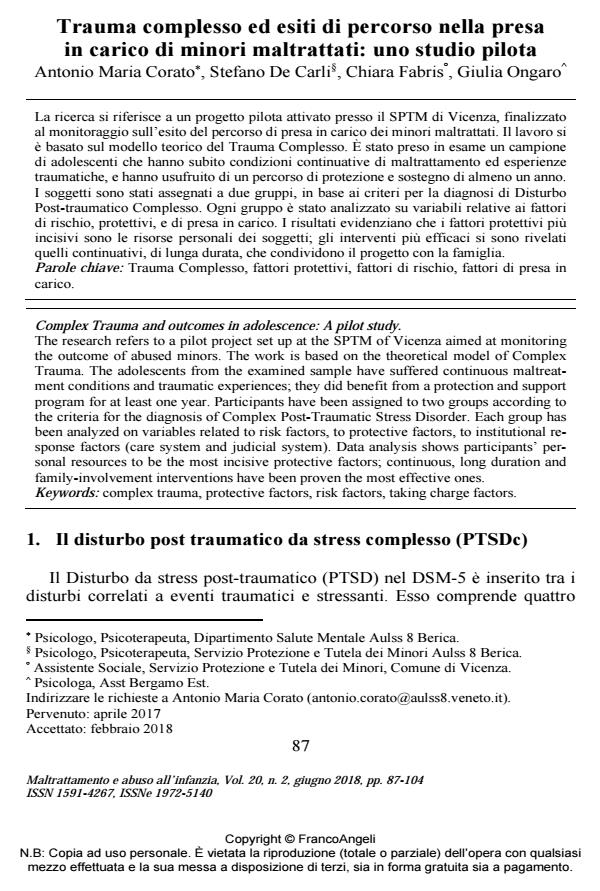Complex Trauma and outcomes in adolescence: A pilot study
Journal title MALTRATTAMENTO E ABUSO ALL’INFANZIA
Author/s Antonio Maria Corato, Stefano De Carli, Chiara Fabris, Giulia Ongaro
Publishing Year 2018 Issue 2018/2
Language Italian Pages 18 P. 87-104 File size 221 KB
DOI 10.3280/MAL2018-002006
DOI is like a bar code for intellectual property: to have more infomation
click here
Below, you can see the article first page
If you want to buy this article in PDF format, you can do it, following the instructions to buy download credits

FrancoAngeli is member of Publishers International Linking Association, Inc (PILA), a not-for-profit association which run the CrossRef service enabling links to and from online scholarly content.
The research refers to a pilot project set up at the SPTM of Vicenza aimed at monitoring the outcome of abused minors. The work is based on the theoretical model of Complex Trauma. The adolescents from the examined sample have suffered continuous maltreatment conditions and traumatic experiences; they did benefit from a protection and support program for at least one year. Participants have been assigned to two groups according to the criteria for the diagnosis of Complex Post-Traumatic Stress Disorder. Each group has been analyzed on variables related to risk factors, to protective factors, to institutional response factors (care system and judicial system). Data analysis shows participants’ personal resources to be the most incisive protective factors; continuous, long duration and family-involvement interventions have been proven the most effective ones.
Keywords: Complex trauma, protective factors, risk factors, taking charge factors.
- Esperienze Sfavorevoli Infantili: un Progetto in Campania per la prevenzione e l'intervento Giulia Savarese, Monica Romei, Luna Carpinelli, Daniela D’Elia, Rosa Angela Villani, Marianna Giordano, Annamaria Scapicchio, Domenico Costantino, in MALTRATTAMENTO E ABUSO ALL'INFANZIA 3/2021 pp.113
DOI: 10.3280/MAL2020-003009
Antonio Maria Corato, Stefano De Carli, Chiara Fabris, Giulia Ongaro, Trauma complesso ed esiti di percorso nella presa in carico di minori maltrattati: uno studio pilota in "MALTRATTAMENTO E ABUSO ALL’INFANZIA" 2/2018, pp 87-104, DOI: 10.3280/MAL2018-002006